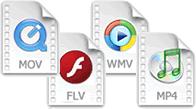Webpage consist only one HTML or XHTML file. Website is a collection of webpages. Portal is a collection of websites which has everything in there. It is usually categorize into some field or subject.
eg:
Webpage

Website
Portal

2. What are multimedia elements that can be integrated into a webpage?
Static images may be raster graphics, typically GIF, JPEG or PNG; or vector formats such as SVG or Flash.
Animated images typically Animated GIF and SVG, but also may be Flash, Shockwave, or Java applet.
Audio, typically MP3, ogg or various proprietary formats.
Video, WMV (Windows), RM (Real Media), FLV (Flash Video), MPG, MOV (QuickTime)
Interactive text: see DHTML.
Interactive illustrations: ranging from "click to play" images to games, typically using script orchestration, Flash, Java applets, SVG, or Shockwave.
3. How to integrate graphics into a webpage?
You may use Dreamweaver to integrate graphics into a webpage. [video]
4. What are the graphics file extensions that can be accepted in WWW medium?
.jpeg, .png and .gif
5. How to integrate audios videos into a webpage and what are the file extensions?
[video]
Video Formats
 | The MP4 format is the new and upcoming format for internet video. It is supported by YouTube, Flash players and HTML5. |
| Format | File | Description |
|---|---|---|
| AVI | .avi | The AVI (Audio Video Interleave) format was developed by Microsoft. The AVI format is supported by all computers running Windows, and by all the most popular web browsers. It is a very common format on the Internet, but not always possible to play on non-Windows computers. |
| WMV | .wmv | The Windows Media format is developed by Microsoft. Windows Media is a common format on the Internet, but Windows Media movies cannot be played on non-Windows computer without an extra (free) component installed. Some later Windows Media movies cannot play at all on non-Windows computers because no player is available |
| MPEG | .mpg .mpeg | The MPEG (Moving Pictures Expert Group) format is the most popular format on the Internet. It is cross-platform, and supported by all the most popular web browsers. |
| QuickTime | .mov | The QuickTime format is developed by Apple. QuickTime is a common format on the Internet, but QuickTime movies cannot be played on a Windows computer without an extra (free) component installed. |
| RealVideo | .rm .ram | The RealVideo format was developed for the Internet by Real Media. The format allows streaming of video (on-line video, Internet TV) with low bandwidths. Because of the low bandwidth priority, quality is often reduced. |
| Flash | .swf .flv | The Flash (Shockwave) format was developed by Macromedia. The Shockwave format requires an extra component to play. But this component comes preinstalled with web browsers like Firefox and Internet Explorer. |
| Mpeg-4 | .mp4 | Mpeg-4 (with H.264 video compression) is the new format for the internet. In fact, YouTube recommends using MP4. YouTube accepts multiple formats, and then converts them all to .flv or .mp4 for distribution. More and more online video publishers are moving to MP4 as the internet sharing format for both Flash players and HTML5. |
Sound Formats
| Format | File | Description |
|---|---|---|
| MIDI | .mid .midi | The MIDI (Musical Instrument Digital Interface) is a format for electronic music devices like synthesizers and PC sound cards. MIDI files do not contain sound, but digital musical instructions (notes) that can be played by electronics (like your PC's sound card). Click here to play The Beatles. Since MIDI format only contains instructions (notes), MIDI files are extremely small. The example above is only 23K in size but it plays for nearly 5 minutes. MIDI is supported by many software systems over a large range of platforms. MIDI is supported by all the most popular Internet browsers. |
| RealAudio | .rm .ram | The RealAudio format was developed for the Internet by Real Media. The format also supports video. The format allows streaming of audio (on-line music, Internet radio) with low bandwidths. Because of the low bandwidth priority, quality is often reduced. |
| Wave | .wav | The Wave (waveform) format is developed by IBM and Microsoft. It is supported by all computers running Windows, and by all the most popular web browsers (except Google Chrome). |
| WMA | .wma | The WMA format (Windows Media Audio), compares in quality to MP3, and is compatible with most players, except the iPod. WMA files can be delivered as a continuous flow of data, which makes it practical for use in Internet radio or on-line music. |
| MP3 | .mp3 .mpga | MP3 files are actually the sound part of MPEG files. The MPEG format was originally developed for video by the Moving Pictures Experts Group. MP3 is one of the most popular sound formats for music. The encoding system combines good compression (small files) with high quality. Expect future software systems to support it. |
source: http://www.w3schools.com/html/html_media.asp
6. How to integrate animations into webpage and what are the file extensions?
[video]
.swf, .exe
7. What are the software that can be used to develop a webpage?
Dreamweaver, Joomla, HTML Editor, FrontPage etc.
8. How to make your webpage interactive?
The interactive webpage should be two-way flow of information, enabling the user to enter information and send it back to the web server for processing. It will be more interesting and fun if the web page consist of variety of multimedia elements which are properly organized.
[video]

No comments:
Post a Comment